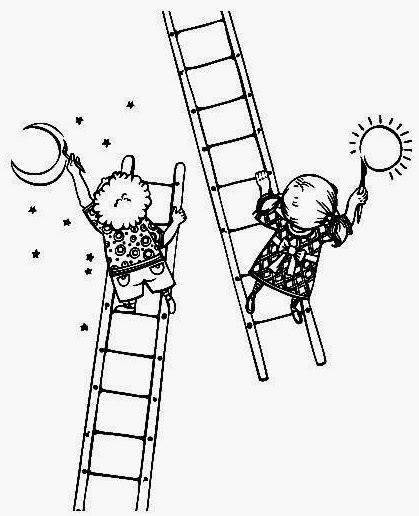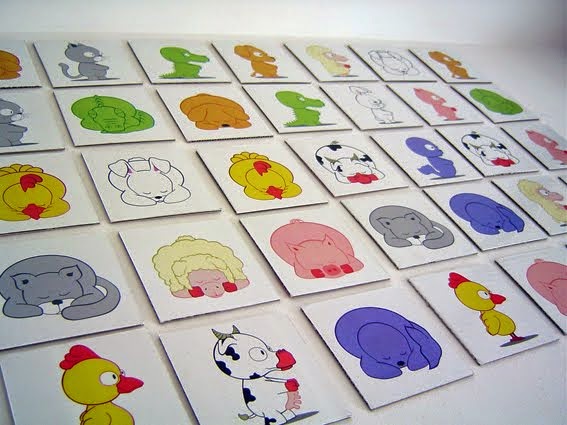Drawing
is a visual art, but it also is an important skill of the development of the
psychomotricity of the children, and it contributes in the evolution of the
graphic gestures. It is a representation or transposition of something
(an object, an emotion…) related to the reality, manifested by creating an own
space that allows the children to take control about their reality, about the
way they interpret and represent it. It is a kind of transmission of expressive,
communicative and creative values, that are important aspects of the integral
development of the children.
Artistic
drawing consists on making pictures with a basic knowledge of this aspect (about
colours, techniques, materials, equilibrium, harmony…) and having followed a
developmental process, through different materials and techniques, working
with different ways and methods, testing and improvising, being creative etc.
It is supposed that the artist has developed a maturative and educational process
to reach the artistic drawing’s ability, and the capacity of represent what he
or she is interested in drawing, and as he or she wants to transmit it.
Children
also follow a process in the drawing aspect, but not in the same context and
neither with the same objective. Fisrt of all, it must be said that an artist does this process voluntary, to aquire knowledge and experience in order to be benefited, and children do a natural process.The evolution of the drawing skills through
childhood requires three developmental aspects: motor skills, cognition and
affective aspects.
- The motor skills consist on the draws of
the children made as they can, according to their maturative and experience. It
can be trained and developed through different manipulative activities.
- Cognition (symbolization), refer to the
draws that show what the child knows and perceives, and the draws can be made
in a symbolic way (by representation), or also in a realistic way (similar to
reality).
- The affective draws are those in which
children are interested in, they represent what they like or dislike.
The drawing development during the childhood is diveded into three big stages:
- Motor or scribbling stage (1-2 years old)
- Representative stage (+2 years old)
- Subjective realism (2-4 years old)
- Conceptual realism (5-7 years old)
- Realist stage (artistinc drawing from 8 years old)
- Realist drawing
1. Motor or scribbling stage (1-2 years old)
"- Action as the basis of the representation.
- Control of the hand and forearm's motor skills.
- Increasing of the movements' control and coordination (voluntary movements referred to the body position and of the corporeal segments).
- Improvement of the fine motor skills.
- Emergence of the symbolic function (cognitive plane together with the motor action)."
The development of the scribbling is divided into three stages:
"Homo-lateral lines (16 months)
 |
| Example of a sribbling with lines |
- The line has a proximal origin (on the shoulder).
- All the arm is in movement.
- Straight segments from left to right (right handed).
Horizontal or oblique sweepings (20 months)
- Lines that combine the start from the axis and the return to the same point.
- Back and forth movements, symmetric for both hands.
Circular lines, positives or negatives
- More flexible lines (in shapes of loops, elongated cycloids, etc.) that substitute the sweepings.
- Those lines are combinated wwith a proximal origin movement (shoulder) and a rotatory movement of distal origin (wrist).
- Spontaneous graphic gestures - srcibbles.
- Instrumental dominance with the adult help".
2. Representative stage (+2 years old)
- Representative intention: the child starts to be worried about the result of the drawing action, losing interest in his or her gesture.
- Better eye-hand coordination: The trace is guided and checked by the eye, which is following the hand movements.
- In enters into action the flexor muscle of the thumb: "it can guide a line to a precedent one"; it is able to do closed types of shape, united for some points (example: square or circle); "it appears the double rotation (positive and, then, negative direction)".
- Figurative intention: The child becomes conscious that sscribbles are ways of communication and expression, and that adults have reactions caused by their drawings.
- Verbal description of the graphic activity: Althouh the pictures of the children are not equal to the real object they wanted to draw, they are able to assign a name to their scribbles.
- Graphic activity is converted to an instrument of communication and a representation.
2.1 Subjective realism (2-4 years old)
 |
| Draw of a person |
- It has a representative intention.
- The affective model predominates.
- The child draws what he or she thinks that is significant, affectively related to reality.
- Evocation of the real model.
- The figurative form is emerged, the child is able to recognize the object but not its structure.
- Additive drawing.
2.2 Conceptual realism (5-7 years old)
 |
| Draw of herself, a friend and I |
- Intensification of the figurative intention; they draw with more realist tendency.
- Cognition influences the perception of the children; they draw more what they know than what they see.
- Appearance of more details in the representation of the objects.
- Disproportioned sizes of the figures (a long leg could represent a boy kicking a ball).
- Representation of te movement through horizontal lines.
- Juxtaposition is disappearing progressively.
- Representation of the space bye lines (the floor and the sky).
 |
Draw about the body
(reality, disproportion) |
|
- Perspective (three dimensions) and transparence.
- Drawings about personal facts, interests or experiences.
 |
Horizontal lines represent
people moving very fast |
 |
A draw about where this child lives,
with all the details (street, trees...) |
 |
A self-portrait draw of a
10 year-old girl |
3. Realist stage (+8 years old)
- The graphic-plastic techniques dominate in the drawing.
- Children are able to appreciate the shapes configuration, they can take into account the proportion, the volume and the perspective.
- They draw with a creative expression and the capability to appreciate arts apear (from 15 years old).
 |
A draw of the Tona's castle
with shadows |
 |
| A draw of a bed with watercolours |
 |
Draw of the 15 year-old
girl's interest with pen texture |
 |
Draw of the corridor
with perspective |
*The image from the motor or scribbling stage is from Google Images
* The drawings from the Subjective realism are from an article I did with some classmates
* The drawings of the Conceptual realism are from the children with whom I do practises
*The drawings of the Realist stage, one is from the same article of the pictures of the Subjective realism, and the other ones were done by me when I was 15-16 years old.
*To see this information in an interesting and different way, into a schematic table, click this link: Table of drawing deveopment
An article called The evolution of psychomotor skills through drawing representation, was created by four classmates and I into the Developmental Psychology's subject. It consists on the investigation of the drawing skills, watching and knowing the characteristics presented in each stage of the childhood's process od development. As the introduction explains: "This
investigation was focused on talking about the psychomotor skills, concretely
on the evolution of children’s drawings through their schooling. Some children of
different ages were asked to draw a
human body, without specifying how
they had to draw it, giving them completed freedom. The objective was to see
the evolution of the drawing through the time, and the changes children have in
the perspective of the body. By analyzing these drawings this research could
get some conclusions focused on the hypothesis and the approaches presented on
the introduction".
The results were:
Course
|
External / internal body
|
Proportioned / disproportitoned figures
|
Abstract / real figures
|
Other observations
|
Kindergarten
|
External
|
Disproportioned
|
Abstract
|
·They are not ready to coordinate what they draw
|
P3
|
External
|
Disproportioned
|
Abstract
|
· They only draw
faces, not the completed body
|
P5
|
External
|
Disproportioned
|
Real
|
·They draw the bodies, so the figure is more completed than P3
|
1st of
primary
|
External and internal
|
Disproportioned
|
Real
|
·A black-skin girl draw a dark-skin body
·Some children pointed and writed some simple parts of the body
·The majority of external drawings were with cothes except two
|
4th of
primary
|
External
|
Proportioned
|
Real
|
·More details
·The majority draw themselves
·One picture were an external body without clothes
|
(Bosch, A., Casañas, M., Font, S., Navarro, J., Nonell, M., 2014, p.1/p. 5)



















